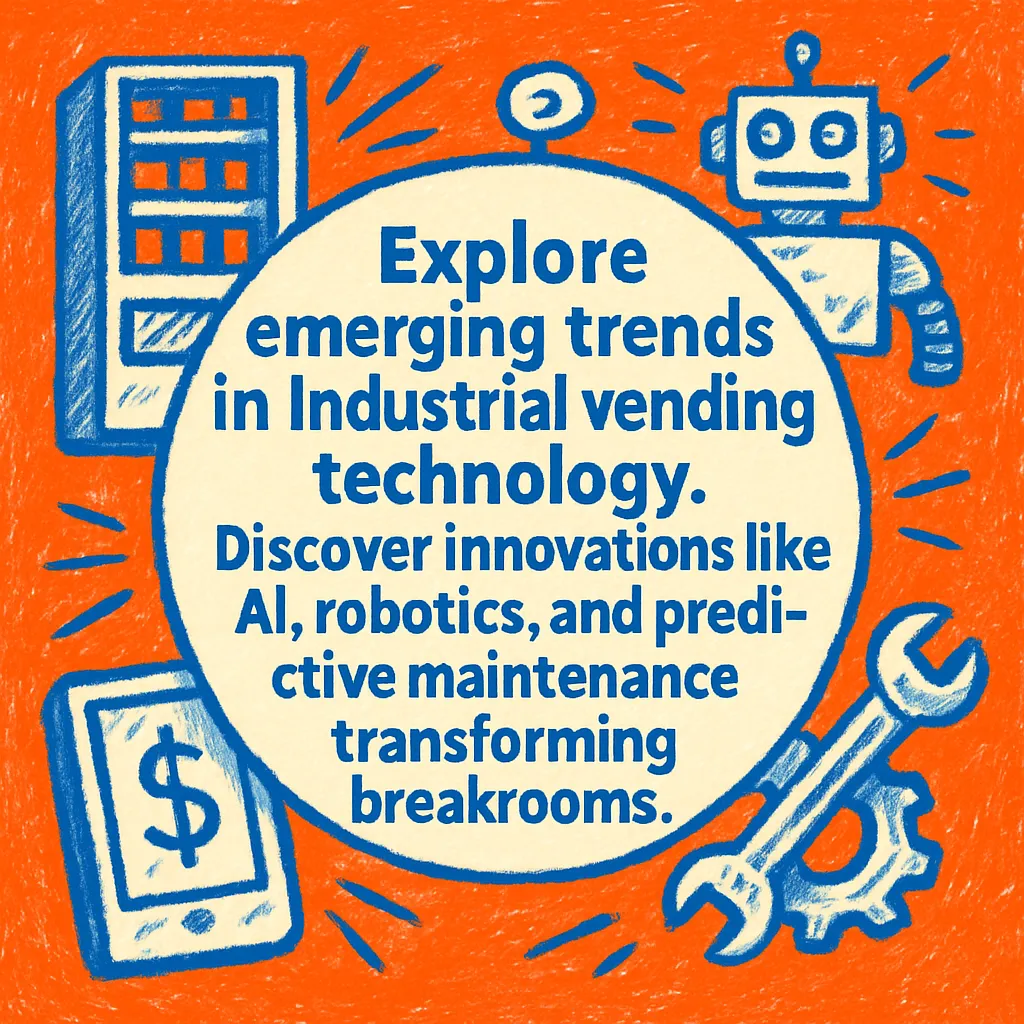Future Trends in Industrial Vending Technology
Explore emerging trends in industrial vending technology. Discover innovations like AI, robotics, and predictive maintenance transforming breakrooms.
Back to Vending for Warehouses ResourcesExplore emerging trends in industrial vending technology. Discover innovations like AI, robotics, and predictive maintenance transforming breakrooms.
Back to Vending for Warehouses ResourcesThe next generation of industrial vending machines offers more than just convenience; they introduce intelligent systems that streamline operations, improve efficiency, and enhance employee access to vital resources.
![]() AI-powered inventory optimizes stocking and reduces waste
AI-powered inventory optimizes stocking and reduces waste
![]() Robotics and automation improve machine uptime and service
Robotics and automation improve machine uptime and service
![]() Predictive maintenance ensures continuous operation in industrial settings
Predictive maintenance ensures continuous operation in industrial settings

The landscape of industrial vending is rapidly evolving, moving beyond simple snack and beverage dispensers to integrated smart solutions. These advancements are driven by technology designed to meet the unique demands of warehouses, factories, and logistics centers, offering unprecedented efficiency and convenience.
Artificial Intelligence (AI) and machine learning are revolutionizing how industrial vending machines operate. These intelligent systems can analyze sales data, predict demand fluctuations, and optimize inventory levels in real-time. This not only reduces waste but also ensures that critical supplies and preferred products are always available. From suggesting customized product assortments based on employee preferences to dynamically adjusting prices, AI is making industrial vending smarter and more responsive.
While still in early stages, robotics are poised to transform industrial vending operations. Imagine automated robots restocking machines, conducting routine maintenance, or even delivering items directly to a specific workstation on a vast factory floor. This can significantly reduce labor costs and improve the speed and reliability of vending services, especially in environments where human access might be challenging or hazardous. For facilities interested in exploring how AI is already impacting operations, consider reviewing our case study on AI vending in a warehouse facility.
The Internet of Things (IoT) is central to the future of industrial vending. Connected machines can communicate real-time data about stock levels, sales, and operational health. This constant data flow enables remote diagnostics and predictive maintenance. Instead of waiting for a machine to break down, operators can identify potential issues in advance, schedule repairs proactively, and minimize downtime. This ensures a consistent and uninterrupted service, crucial for 24/7 industrial environments. Moreover, the integration of these technologies can also offer a competitive advantage, as explored further in discussions about the benefits of vending in warehouse settings.
Future industrial vending machines will continue to diversify their product offerings. Beyond traditional food and beverages, expect to see machines dispensing Personal Protective Equipment (PPE), small tools, spare parts, and even office supplies. This "point-of-need" dispensing ensures that essential items are immediately accessible, saving employees time from traveling to supply rooms or off-site stores. This expansion of offerings demonstrates the adaptability of these advanced systems.
Sustainability is another growing trend. Future industrial vending machines will feature enhanced energy efficiency, use eco-friendly refrigerants, and integrate with recycling programs. Accessibility will also be prioritized, with features like touchscreen interfaces, multi-language support, and adaptive designs to cater to a diverse workforce. These innovations are not just about technology; they are about creating more efficient, safer, and user-friendly environments for the industrial workforce.
Key trends include AI integration, IoT connectivity, advanced robotics for restocking, predictive maintenance, and enhanced data analytics for inventory management.
AI enables smart inventory predictions, personalized product recommendations, dynamic pricing, and optimized routing for restocking, leading to greater efficiency.
Robotics are being explored for automated restocking, maintenance tasks, and even mobile vending units that can deliver items directly to workstations within industrial facilities.
Yes, future industrial vending is expanding beyond snacks to include PPE, tools, spare parts, and other essential supplies directly at the point of need.
Predictive maintenance uses data analytics to anticipate machine failures before they occur, allowing for proactive repairs and minimizing downtime of industrial vending units.
IoT provides real-time data on stock levels, sales patterns, and machine status, enabling remote monitoring and improving operational efficiency and responsiveness.
Absolutely. Touchless payments like mobile apps, QR codes, and biometric scanning are becoming standard, offering hygiene and convenience in industrial environments.
Benefits include increased productivity, reduced operational costs, improved worker access to essential supplies, and enhanced safety through automated dispensing.
New generations of industrial vending machines are designed with advanced energy-saving components and smart power management to reduce environmental impact and operating costs.
Customizable product assortments, modular machine designs, and scalable solutions will allow future industrial vending to cater precisely to the unique demands of warehouses, factories, and logistics centers.